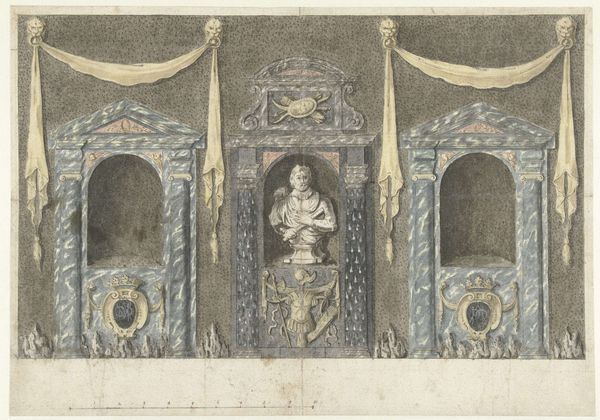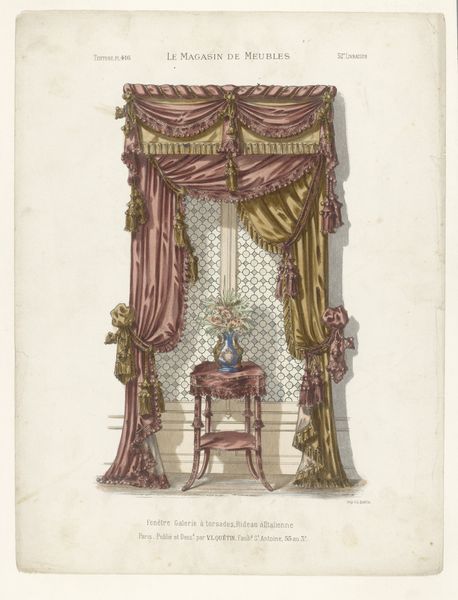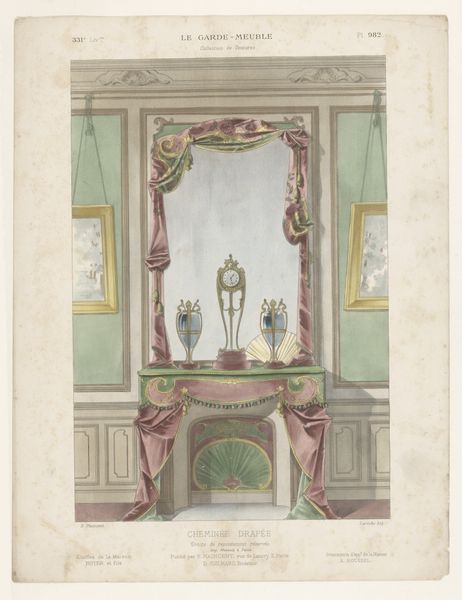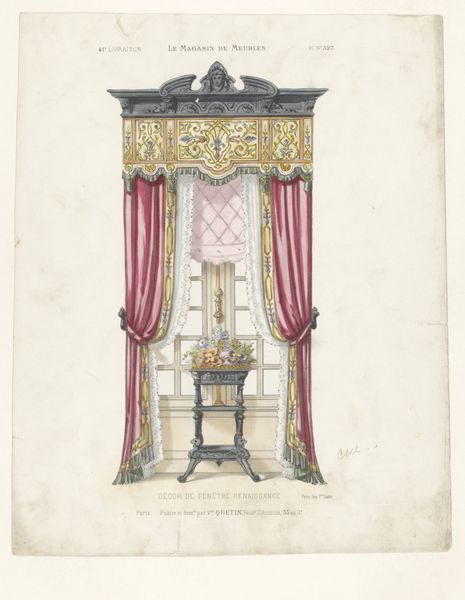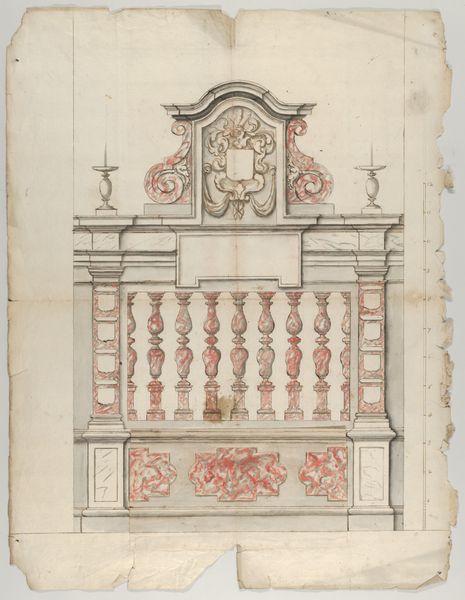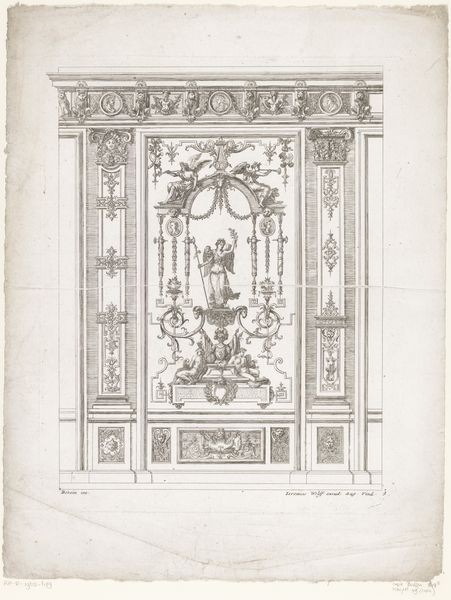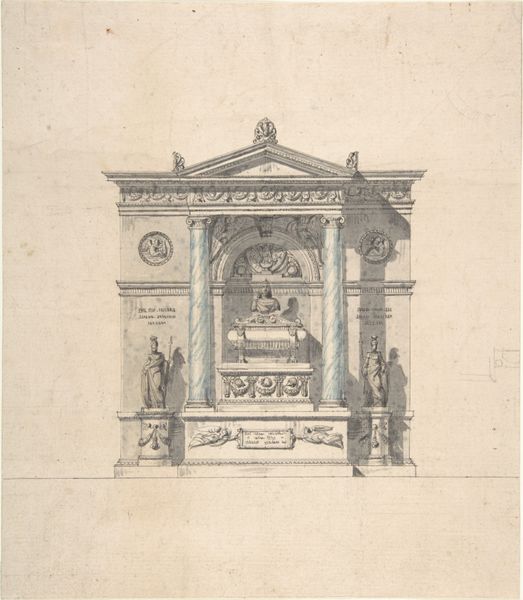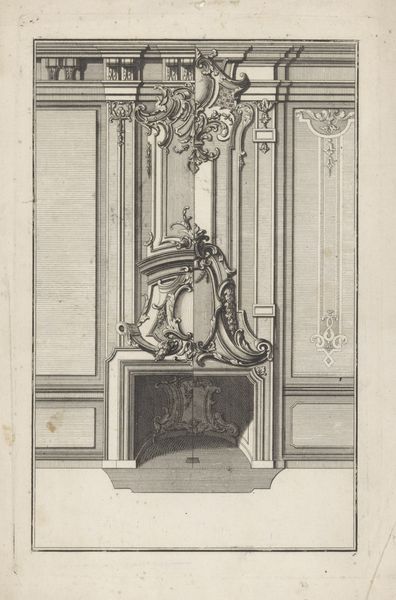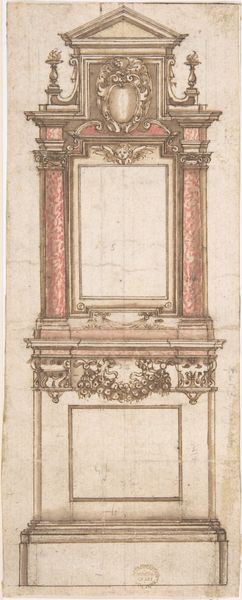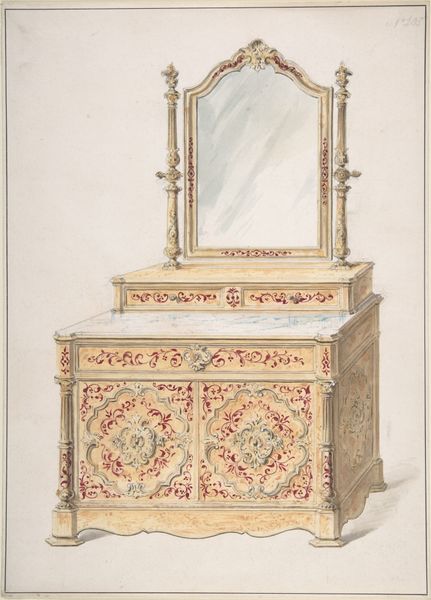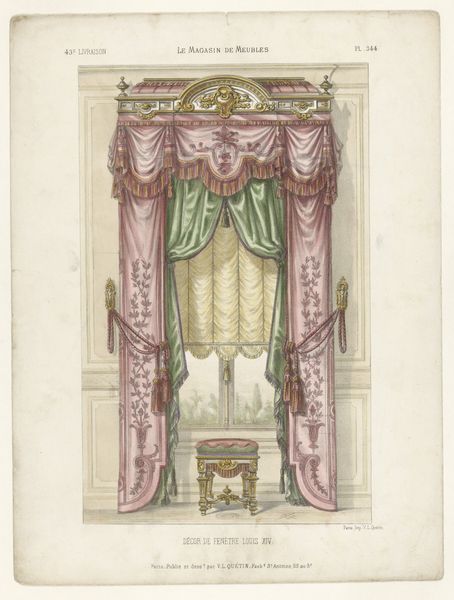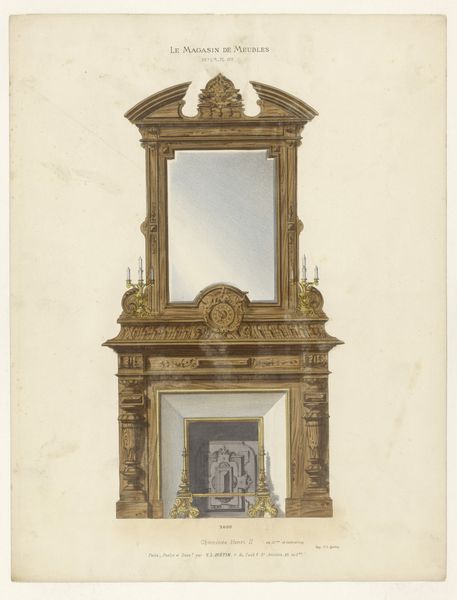
Dimensions: height 358 mm, width 272 mm
Copyright: Rijks Museum: Open Domain
Curator: Today, we’re examining a print titled “Haard met portret en draperie,” or "Fireplace with portrait and drapery." It's believed to have been created sometime between 1860 and 1880 by the artist Léon Laroche. Editor: My immediate impression is a mix of the domestic and the aspirational. The delicate watercolor rendering almost softens what I imagine would be a fairly imposing physical structure. The portrait looming over the hearth gives a definite sense of power, doesn’t it? Curator: Absolutely. It’s important to note that during this period, the fireplace was the heart of the home, both functionally and symbolically. Placing a portrait above it wasn’t merely decorative; it was about embedding familial identity and continuity in the very structure of domestic life. It's as if the ancestors are always present. Editor: That layering of meaning is striking. The Neo-Classical style, which aims to resurrect the aesthetics of ancient Greece and Rome, communicates a reverence for tradition and established social order. How does the decorative art interplay with the portrait's status symbol? Curator: Notice how the floral and gilded embellishments surrounding the portrait and cascading down the fireplace structure soften and domesticate this statement of prestige. Flowers have their language of remembrance and beauty. These details soften, yet still reinforce a sense of refinement that the family probably wanted to project. Editor: So the fireplace becomes a stage for enacting social roles and aspirations, mediated by class and gender. What strikes me now is how a supposedly functional object performs so much identity work. Also, what's up with all the cherubs?! Curator: The cherubs introduce an element of mythology and playful innocence, maybe an embrace of idealized family and home. But I do have a soft spot for how prints like these provided models and aspirations of interior décor accessible to a wider audience than bespoke furniture. They offered glimpses into how space and décor could express status, knowledge, and belonging. Editor: It's a great image to consider how art and design have always served to reflect, reinforce, and sometimes resist the social structures we live within. I like this tension in our conversation, and that between interior domestic space and outward representation of an aestheticized self. Curator: Agreed. It gives us a unique perspective into a slice of 19th century life and how symbolic imagery operates across cultures and time.
Comments
No comments
Be the first to comment and join the conversation on the ultimate creative platform.
